The Outlook for 2025: Insights from 10 Top Healthcare Visionaries
 by Tess Michaels, CEO & Founder of Clasp
by Tess Michaels, CEO & Founder of Clasp
By 2026, the United States is projected to face a shortage of over 3.2 million healthcare workers (Source: American Hospital Association). This talent gap threatens not just the operational viability of healthcare systems but the quality of care for millions of patients. The urgency to act is clear: during COVID-19, nurse understaffing contributed to a 17% increase in in-hospital deaths. (Source: International Journal of Nursing Studies)
To better understand the path forward, I spoke with ten visionary healthcare leaders—a mix of Chief People Officers, Chief Medical Officers, CEOs, and CNOS—representing systems that span urban hubs, rural communities, and underserved regions. From CommonSpirit Health, the third largest hospital in the US, to Memorial Sloan Kettering, nationally recognized as one of the top cancer centers in America, their perspectives reflect the unique challenges and opportunities in addressing this crisis.
Here’s what I learned.
1. The Challenge Is Universal, but Solutions Must Be Targeted & Tailored
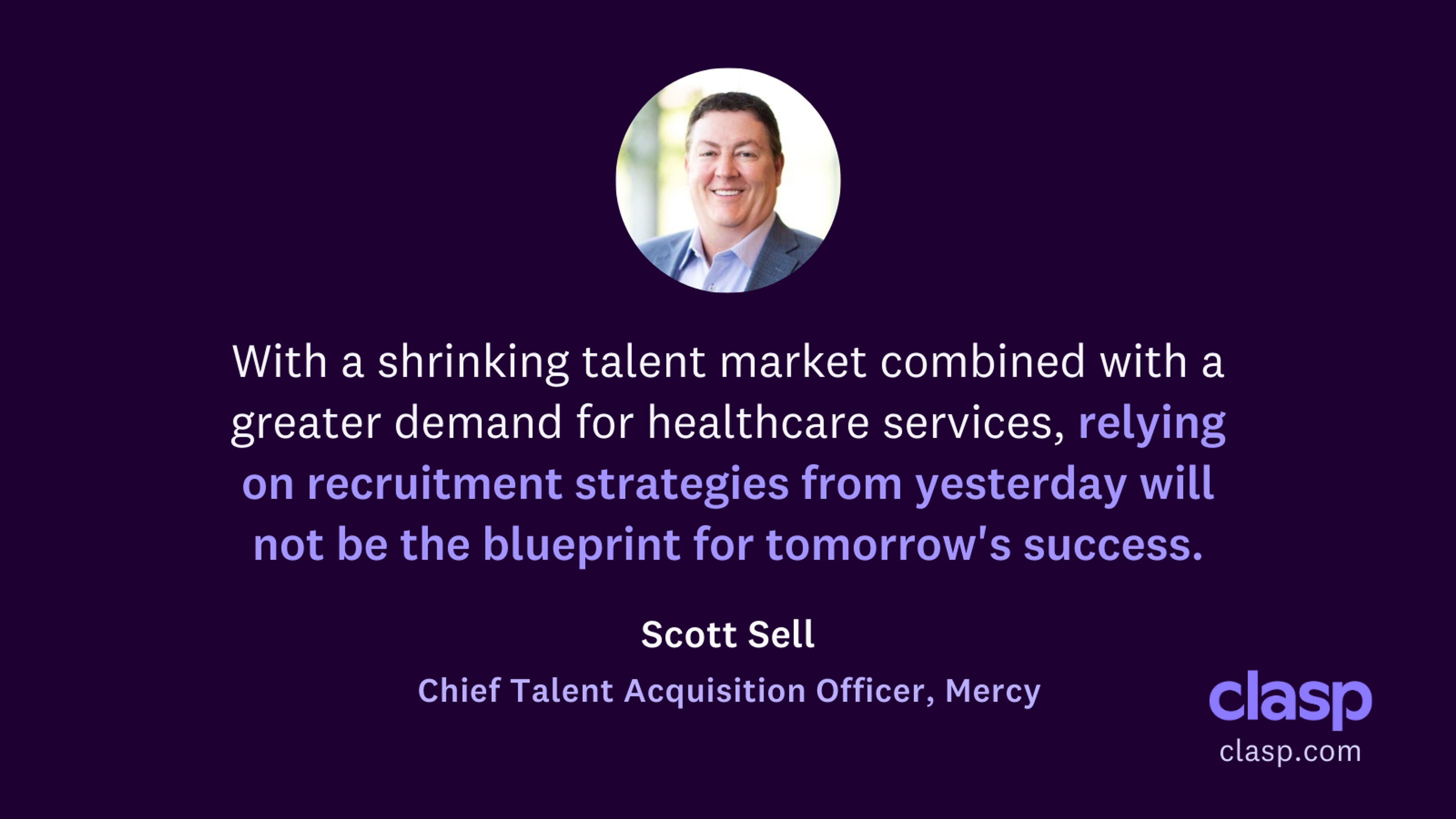
Healthcare workforce shortages affect all types of systems, but the solutions must address the specific needs of each region, population, role, and—let’s face it—generation.
Leaders like Marvin O’Quinn, former CEO of CommonSpirit Health, which employs 175,000 people across 24 states, emphasized not just the importance of innovative partnerships but also the pressing need to adapt to Gen Z’s expectations in order to hire and retain critical talent:
“Hiring and maintaining sufficient personnel to sustain operations in hospitals and health systems will be an increasing challenge for health system leaders as attitudes toward work and lifestyle have changed and continue to change. Healthcare leaders will have to be much more innovative. They will have to take approaches outside of their comfort zones or they will not be successful. This will include developing partnerships and relationships that they have not had before that will help them fine and bond with potential employees.”
- Marvin O’Quinn, former CEO of CommonSpirit Health
And at Mercy—the 13th largest hospital system in the nation with 50 acute care and specialty hospitals, urgent care locations, imaging centers, and pharmacies—leaders like Chief Talent Acquisition Officer Scott Sell are rethinking traditional strategies. To put it bluntly, Scott said:
“With a shrinking talent market combined with a greater demand for healthcare services, relying on recruitment strategies from yesterday will not be the blueprint for tomorrow's success.”
- Scott Sell, Chief Talent Acquisition Officer, Mercy
This is particularly meaningful coming from Mercy, which boasts a 25% boomerang rate, meaning 1 in 4 employees who leave eventually return. (See Scott’s tips for building high-performance, high-retention culture from our October webinar here.)
2. Six Key Strategies for 2025
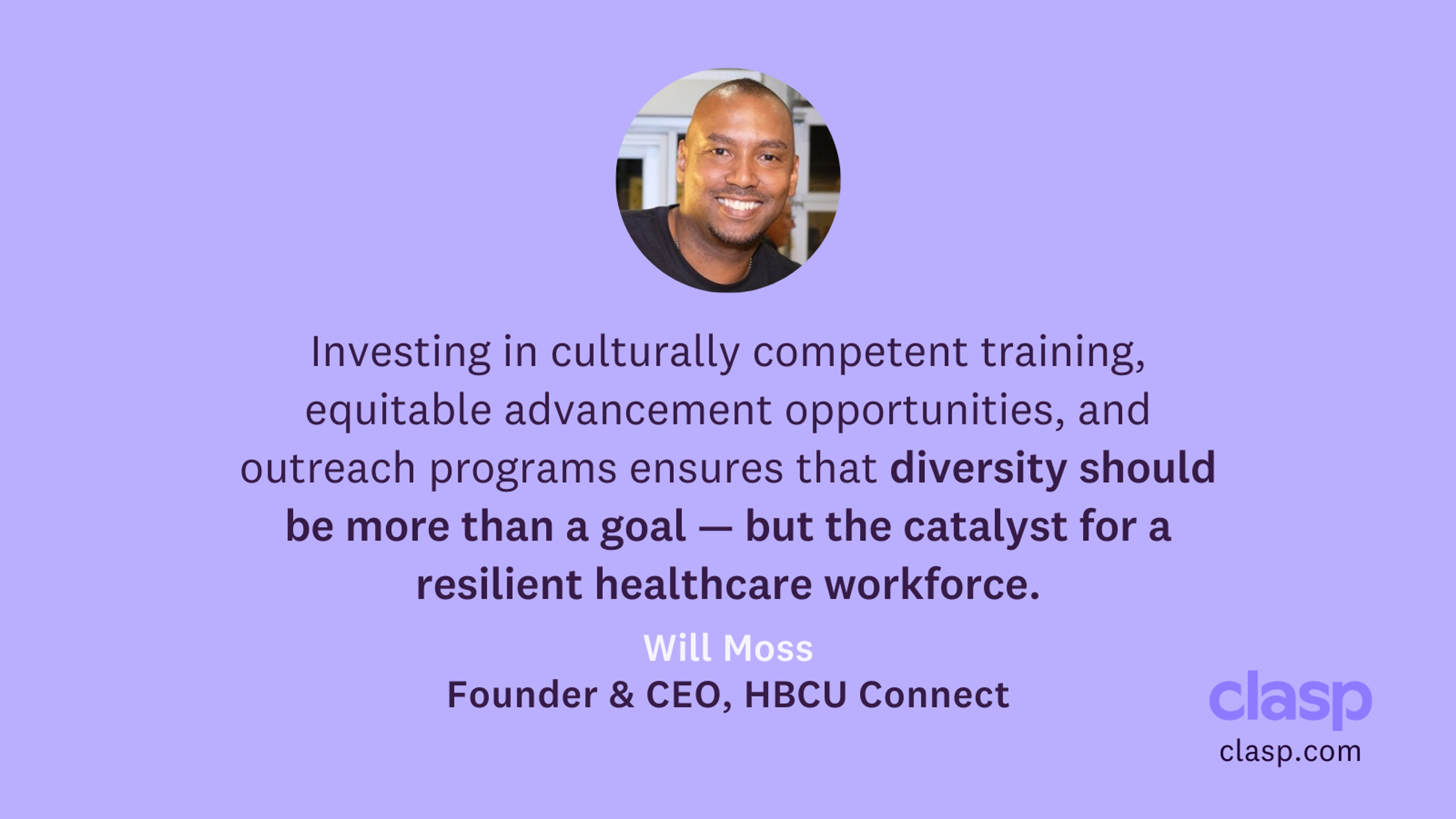
Throughout my conversations, six critical strategies emerged as essential for overcoming workforce challenges:
- New Sources of Talent: Build partnerships with academic institutions, offer relocation programs, and invest in upskilling initiatives. For example, Arkansas Children’s launched a program to train administrative and janitorial staff to fulfill some responsibilities of respiratory therapists during an acute shortage.
- Nontraditional Talent Pools: Recruit veterans and mid-career professionals, and starte engaging students as early as middle school to cultivate interest in healthcare careers.
- Reimagining Roles: Use technology to enhance efficiency and redefine the scope of roles like virtual nurses and AI-assisted radiologists.
- Retention as Recruitment: Prioritize flexible schedules, professional development, and student loan repayment programs to retain staff.
- Technology as a Catalyst: Implement AI-driven analytics to forecast workforce needs and automation to reduce administrative burdens.
- Diversity, Equity, and Inclusion: Partner with HBCUs and community organizations to broaden the talent pool and promote inclusivity.
Will Moss, Founder & CEO of HBCU Connect, the largest network of students and alumni from Historically Black Colleges & Universities, stressed that DEI initiatives are not just a moral imperative—they’re a strategic one:
“Addressing healthcare labor shortages in 2025 will require a fundamental shift toward especially inclusive recruitment and retention practices. By tapping into the diverse talent pools at HBCUs, their graduates and other minority-serving institutions, we can unlock an even larger pool of skilled, passionate professionals ready to make an impact. Investing in culturally competent training, equitable advancement opportunities, and outreach programs ensures that diversity should be more than a goal—but the catalyst for a resilient healthcare workforce.”
- Will Moss, Founder & CEO of HBCU Connect
3. The Time to Act Is Now: Build Educational Pathways
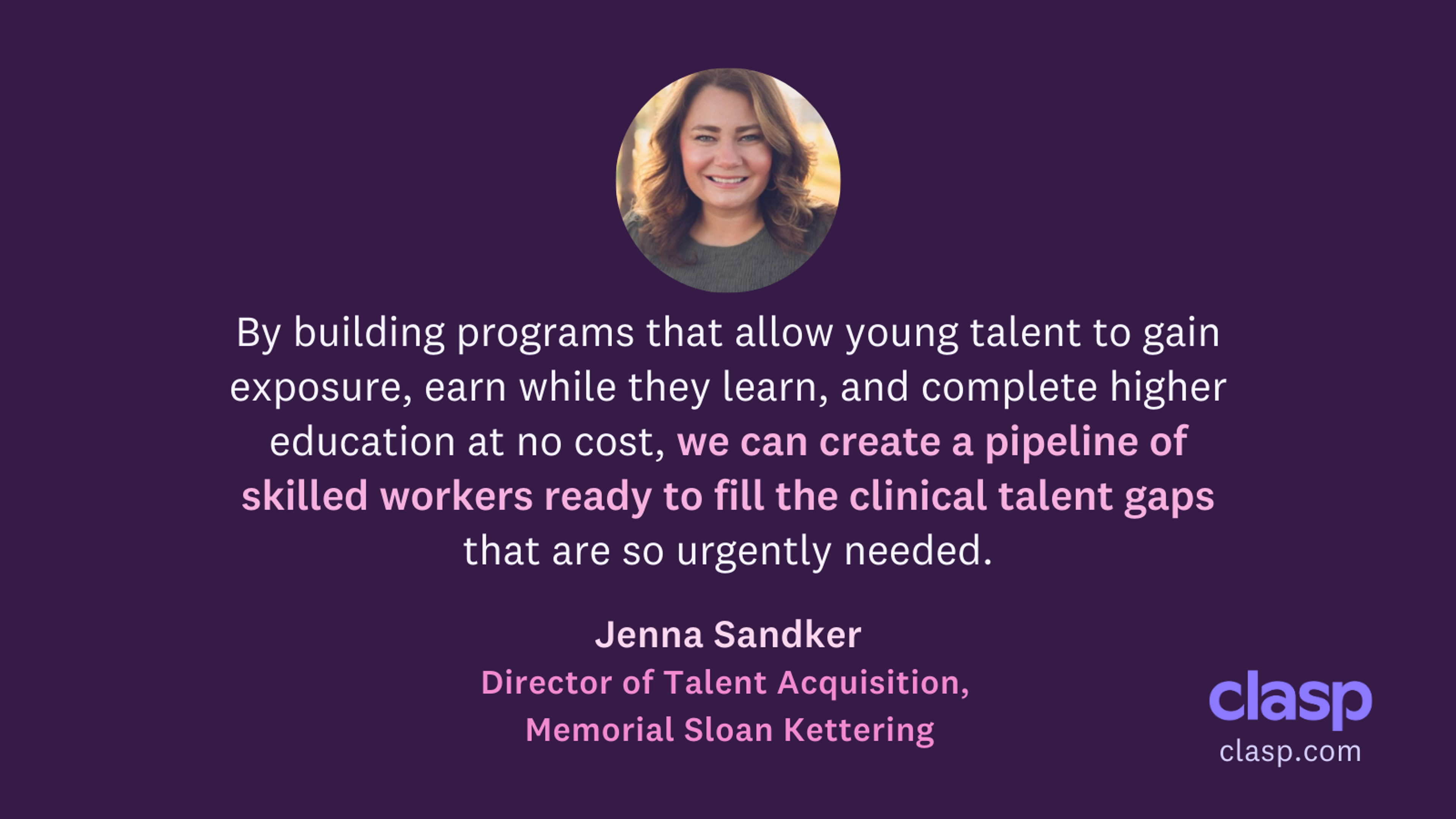
Youth apprenticeship programs, employer-led training, and innovative education-to-career pathways are emerging as pivotal solutions for long-term success. Jenna Sandker, Director of Talent Acquisition at Memorial Sloan Kettering, sees these programs as transformative:
“I think in 2025, we will see a scale of youth apprenticeship programs in healthcare as a transformative movement to address critical labor shortages. By building programs that allow young talent to gain exposure, earn while they learn, and complete higher education at no cost, we can create a pipeline of skilled workers ready to fill the clinical talent gaps that are so urgently needed.”
– Jenna Sandker, Director of Talent Acquisition, Memorial Sloan Kettering
Gay Landstrom, SVP and Chief Nursing Officer at Trinity Health, the 6th largest hospital in the U.S. with over 127,000 people, echoed this call for employer-led solutions in cultivating new clinical talent:
“Employers must actively engage in helping create the workforce of the future. The current and future workforce shortages in nursing call for us to work in partnership with new collaborators to find innovative ways to both encourage people to enter the workforce and find ways to lower barriers to successful completion of their education or training.”
– Gay Landstrom, SVP and Chief Nursing Officer, Trinity Health
Higher education leaders like Dr. Howard Purcell, President and CEO of the New England College of Optometry, have seen the value in partnering with operators like Clasp to build education-to-career pathways and reduce barriers to entry:
“As the first optometry school in the U.S. to partner with Clasp nearly three years ago, our students have gained direct access to career pathways with four leading optometry employers across more than 10 States in the U.S. We are not only reshaping how we prepare future optometrists but also providing tangible benefits—covering two years of tuition for new talent and up to all four years through upskilling programs. With over 25% of our student body engaging in Clasp’s recent events, we’re excited to build on this momentum and further expand these opportunities in 2025, redefining the future of optometry education and career development.”
- Dr. Howard Purcell, President & CEO, New England College of Optometry
4. Addressing Regional Needs
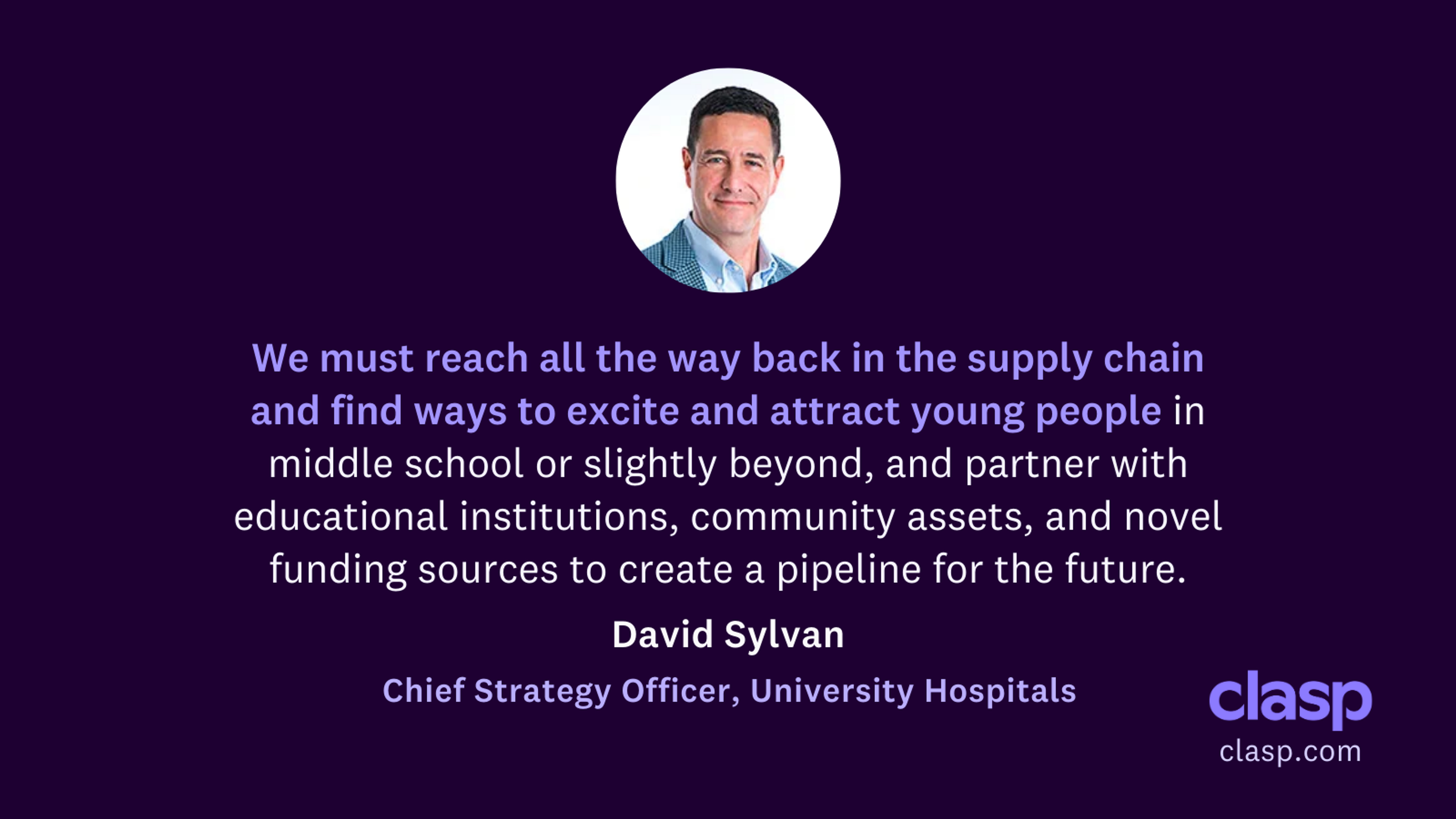
Of course, shortages are not felt the same in every state, or in every role. For example, according to Health Resources and Services Administration, Georgia, California, and Washington face the highest nursing shortage rates in the country (26%-29%), while North Dakota, South Dakota and Utah actually face a surplus. (Source: HRSA) And while rural health systems often struggle with isolation, urban centers face fierce competition for talent. The conclusion: regional challenges require tailored solutions.
David Sylvan, Chief Strategy Officer at University Hospitals, ranked among the Top 3 hospitals in Ohio, emphasized the importance of early intervention and community partnerships:
“We must reach all the way back in the supply chain and find ways to excite and attract young people in middle school or slightly beyond, and partner with educational institutions, community assets, and novel funding sources to create a pipeline for the future. This is even more important for those communities historically overlooked or ill-positioned to consider a career path in healthcare.”
- David Sylvan, Chief Strategy Officer, University Hospitals
With more than 32,000 employees, University Hospitals is the second-largest employer in Northeast Ohio, a state in which 63% of direct care nurses are considering leaving bedside care, yet 89% say they would stay if minimum staffing standards were enforced. (Source: ONA)
At Clasp, we're uniquely positioned to address these challenges by connecting employers in underserved regions with educational institutions and students. A critical focus for us in 2025 is expanding solutions for employers located in "school deserts," or areas with limited access to academic programs that train students for critical healthcare roles. By creating incentivized pathways for talent to relocate to these regions, we enable healthcare systems to strengthen their talent pipelines and ensure access to quality care, regardless of geography.
5. A Collective Commitment to Innovation
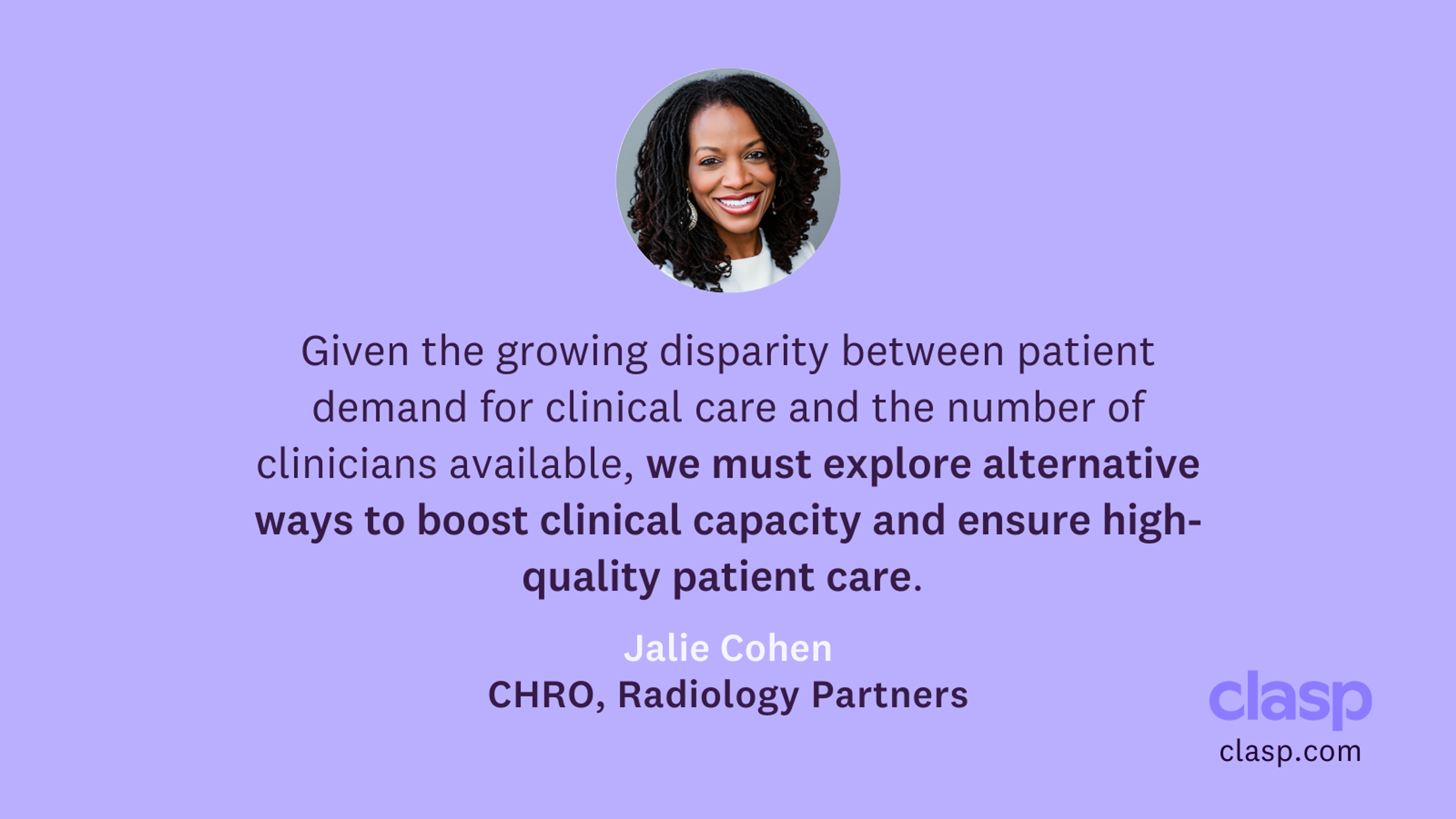
There is no doubt among healthcare leaders that technology is reshaping how systems approach workforce challenges. Leaders like Carl Spear, Executive Vice President at EssilorLuxottica Eye Care, the world’s largest eyewear company and employer of 2,500 eye doctors, emphasizes that education and technology must work hand-in-hand:
“We will continue to promote and support education and incentives for doctors to provide care in underserved areas. Additionally, we will continue to leverage innovative technologies to supplement patient care and provide our doctors with work-life balance.”
- Carl Spear, EVP, EssilorLuxottica Eye Care
One of the most innovative models I’ve seen is at Trinity Health, where Gay Landstrom, who joined us for our August webinar on cultivating new nursing talent, says they were able to scale theirTogetherTeam Virtual Connected Care™ delivery model to 62 nursing units cross 11 states.
This program effectively utilizes experienced nurses as virtual advisors and caregivers, supporting and mentoring onsite junior nurses to deliver quality care, while increasing career longevity and retention of senior nurses.
“It took courage and, I think, a kind of pioneer spirit on the part of our nurses. I really wanted to make sure that we created a role for the experienced senior nurse so we could extend their career. This way, they didn't feel like they had to leave bedside care, retire, or find a desk job. We wanted to keep their knowledge, skill, and ability to work with complex patients in patient care, and ensure that could be shared with a younger generation of early-career nurses. So, we made the decision that rather than nurses rotating through different roles, the virtual nurse role would require at least eight years of experience.”
- Gay Landstrom, Senior Vice President & Chief Nursing Officer at Trinity Health
Jalie Cohen, CHRO at Radiology Partners,a leading radiology practice serving more than 3,300 hospitals and other healthcare facilities the U.S., focused on the role of technology in enhancing clinical capacity:
“Given the growing disparity between patient demand for clinical care and the number of clinicians available, we must explore alternative ways to boost clinical capacity and ensure high-quality patient care. One strategy is to leverage technology that enables physicians to reduce administrative burdens and devote more time to efficient, focused clinical diagnosis—a key approach to addressing the projected labor shortage in 2025.”
- Jalie Cohen, CHRO at Radiology Partners
And Memorial Sloan Kettering’s Jenna Sandker added that AI-driven recruitment processes could transform workforce planning:
“I believe AI will continue to play a pivotal role in addressing talent gaps in healthcare by streamlining recruitment and improving the experience for candidates and the Talent Acquisition teams working to fill the staffing needs. By automating administrative tasks, AI will free up time for more strategic work while using predictive analytics to forecast where talent gaps will emerge.”
- Jenna Sandker, Director of Talent Acquisition, Memorial Sloan Kettering
Conclusion
The leaders featured in this article represent some of the brightest minds tackling healthcare’s workforce crisis. And hearing directly from them reinforced one key takeaway: building a sustainable healthcare workforce is not just possible but essential. By investing in innovative partnerships, technology, and talent pipelines, we can create a future where healthcare systems thrive—and every patient receives the care they deserve.
At Clasp, we are proud to facilitate these discussions and support organizations in turning vision into action. Together, we can shape a resilient and thriving healthcare workforce for years to come.